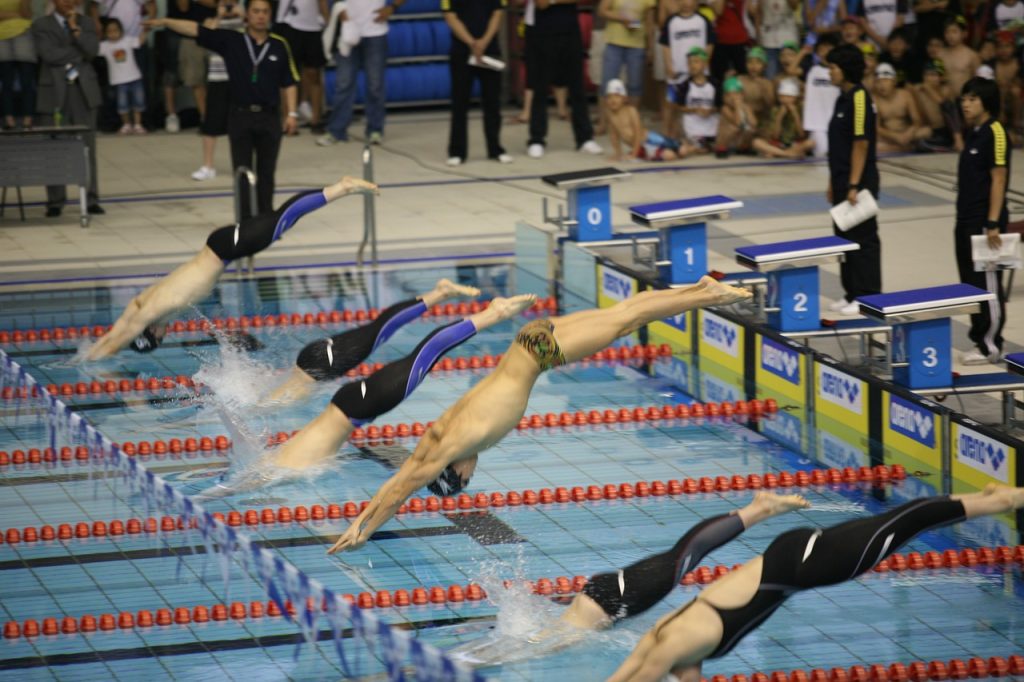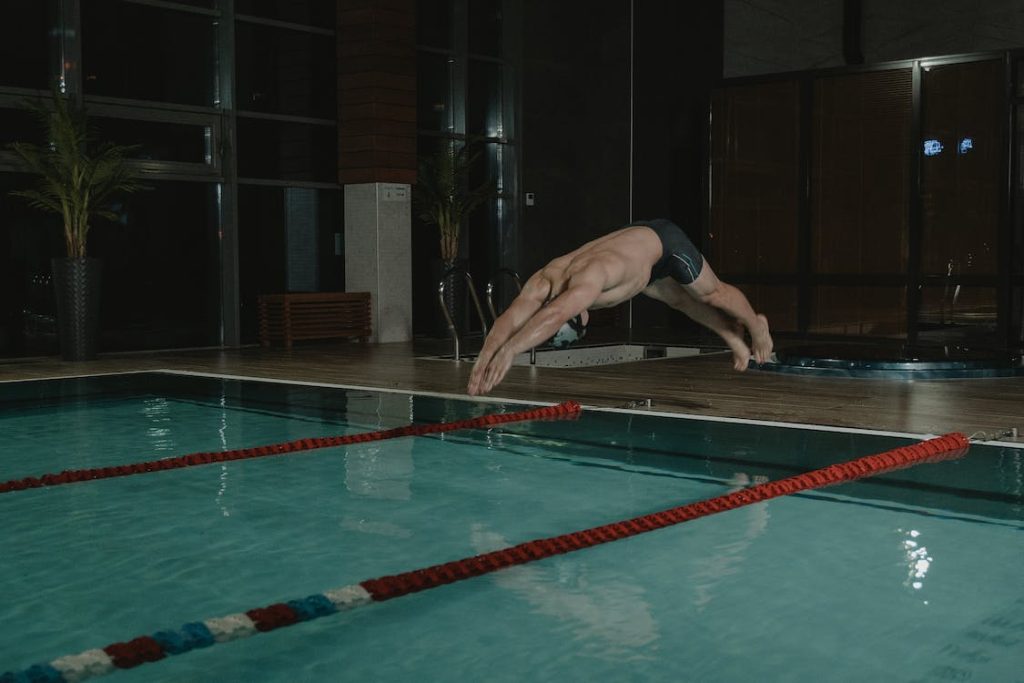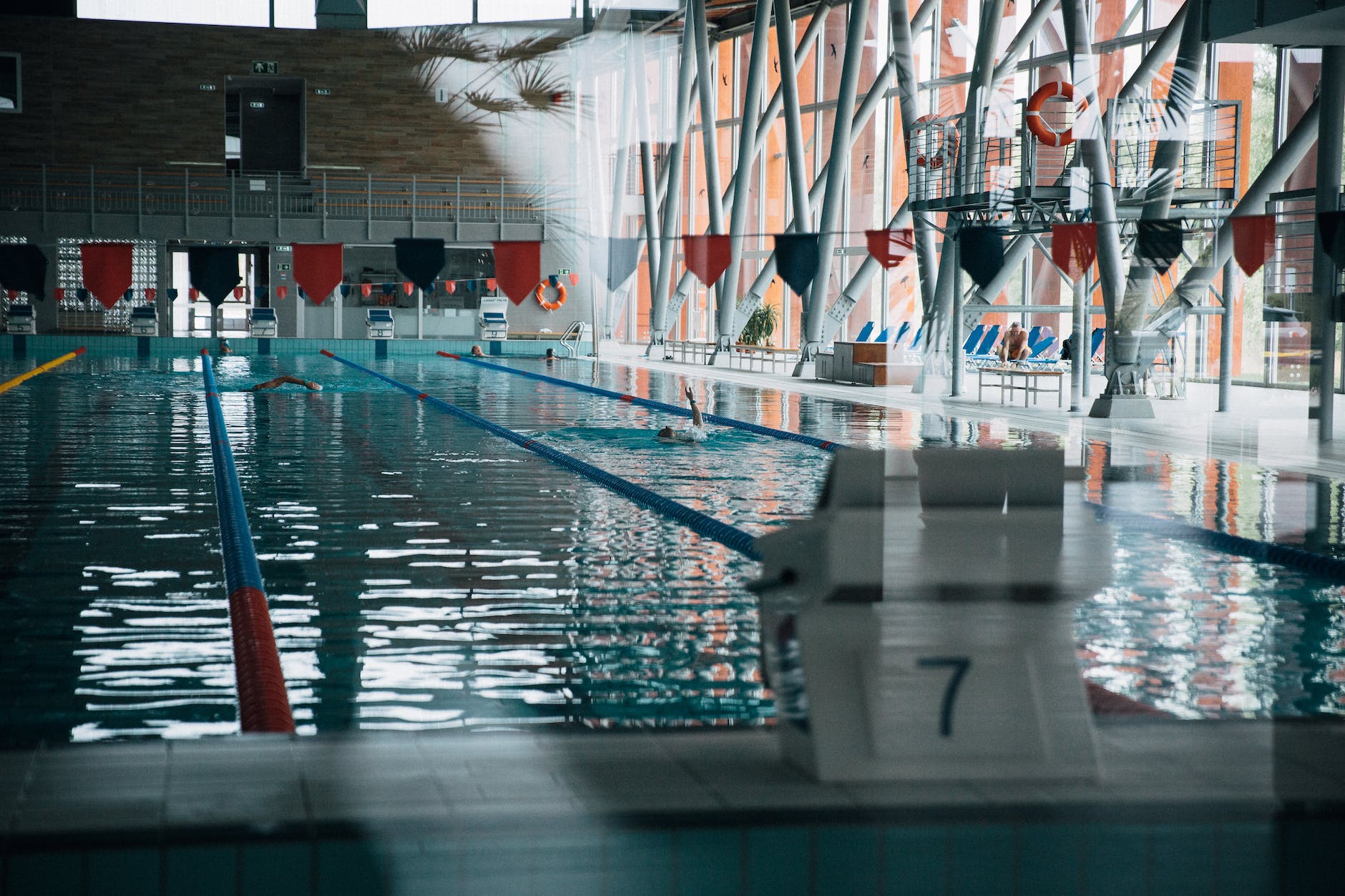In the world of competitive swimming, a good start can make all the difference between victory and defeat.
A start refers to the initial moment when a swimmer dives into the water at the beginning of a race. It is a critical component of a swimmer’s performance, as it sets the tone for the entire race.

Understanding the meaning of starts in swimming and mastering the techniques involved can greatly enhance a swimmer’s chances of success.
The Importance of a Good Start in Swimming Competitions
A good start is essential in swimming competitions for several reasons.
Firstly, it allows the swimmer to gain an advantage over their competitors by propelling themselves forward with maximum speed and efficiency. A powerful start can give the swimmer a head start, allowing them to establish an early lead.
Secondly, a good start helps a swimmer establish a strong rhythm and momentum, which can be carried throughout the race.
Lastly, a good start can also boost a swimmer’s confidence and mental focus, setting them up for a strong performance overall.
Rules and Regulations for Starts in Swimming
In order to ensure fair competition, swimming races have specific rules and regulations regarding starts. These rules are enforced to maintain consistency and prevent any unfair advantages.
The most common start used in swimming is the “forward start,” where the swimmer begins the race by diving headfirst into the water.

To execute a proper start, swimmers must adhere to certain guidelines. These include starting from a stationary position, keeping at least one foot in contact with the starting platform until the race begins, and not leaving the starting position until the starting signal is given.
READ ALSO: How to Conquer Swimming 100 Yards Like a Pro
False Starts in Swimming: What are they and how are they Penalized?
A false start in swimming occurs when a swimmer moves before the starting signal is given. This can happen due to a variety of reasons, such as anticipation or a loss of concentration.
False starts are penalized to maintain fairness and discourage swimmers from gaining an unfair advantage.
The penalties for false starts vary depending on the level of competition. In most cases, a swimmer is disqualified from the race if they commit a false start.
However, some competitions may allow a certain number of false starts before disqualification.
How many False Starts are Allowed in Swimming Competitions?
The number of false starts allowed in swimming competitions depends on the rules set by the governing body. In most cases, swimmers are allowed one false start before being disqualified.
However, some competitions may have more lenient rules and allow multiple false starts before disqualification.
It is important for swimmers to familiarize themselves with the specific rules and regulations of the competition they are participating in to avoid unnecessary disqualification.
Techniques for a Powerful and Efficient Start in Swimming
To execute a powerful and efficient start in swimming, swimmers must focus on several key techniques.
Firstly, the body position during the start is crucial. Swimmers should aim to achieve a streamlined position, with the head tucked between the arms and the body extended. This reduces drag and allows for maximum propulsion.

Secondly, the dive itself plays a significant role in the start. Swimmers should aim to dive at an angle that allows for a smooth entry into the water, minimizing resistance.
Additionally, a strong leg kick and explosive arm movement are essential to generate power and speed during the start.
READ ALSO: Why Are Some Swimmers Faster Than Others?
Relay Starts in Swimming and its Advantages
Relay starts in swimming differ from individual starts in that they involve multiple swimmers.
In a relay, each swimmer starts from a starting block, and as soon as the previous swimmer touches the wall, the next swimmer begins their dive. Relay starts offer several advantages over individual starts.
Firstly, the relay exchange allows swimmers to maintain their momentum, as the next swimmer is already in motion when they start. This can result in faster overall times compared to individual starts.
Secondly, relay starts require precise timing and coordination, which can improve teamwork and communication among swimmers.
How Much Faster is a Relay Start in Swimming Compared to an Individual Start?
The speed advantage of a relay start compared to an individual start can vary depending on the swimmers and the specific race. However, research has shown that relay starts can be significantly faster than individual starts.
In some cases, relay starts have been found to be up to 0.5 seconds faster per swimmer. While this may seem like a small margin, in a sport where races can be won or lost by mere milliseconds, it can make a substantial difference.
Training Exercises to Improve Your Starts in Swimming
Improving starts in swimming requires regular practice and specific training exercises. One effective exercise is the “block start drill,” where swimmers practice their start technique using starting blocks.
By repeatedly performing starts from various positions on the block, swimmers can refine their body position, dive angle, and explosive power.

Another useful exercise is the “reaction time drill,” where swimmers practice reacting quickly to a starting signal. This helps to reduce the risk of false starts and improve overall start performance.
Additionally, dryland exercises such as plyometrics and strength training can enhance a swimmer’s power and explosiveness during starts.
READ ALSO: What Happens When Swimmers Tie for Gold in a Competition?
Common Mistakes to Avoid in Starts in Swimming
While mastering starts in swimming is essential, it is equally important to be aware of common mistakes that can hinder performance.
One common mistake is a premature or delayed reaction to the starting signal. Swimmers must train their reaction time to ensure they start at the exact moment the signal is given.
Another mistake is poor body position during the start. Failing to achieve a streamlined position can increase drag and slow down the swimmer.
Lastly, insufficient leg and arm power can limit the speed and distance covered during the start. Swimmers should focus on building strength and power through specific training exercises.
READ ALSO: 10 Lies About the Swimming Pool Chlorine
Conclusion
Starts in swimming are a fundamental aspect of competitive swimming. A good start can provide swimmers with a significant advantage, while a false start can lead to disqualification.
Understanding the rules, techniques, and training exercises associated with starts in swimming is crucial for swimmers looking to improve their performance.
Whether participating in individual races or relays, mastering the art of the start can greatly enhance a swimmer’s chances of success.
By dedicating time and effort to perfecting their starts, swimmers can propel themselves towards victory.
Subscribe to our newsletter today to stay updated on the latest sports insights and get expert answers to difficult sports questions.
Subscribe to our newsletter!
Join our community of passionate sports enthusiasts and take your knowledge to new heights.
Don’t miss out on valuable content that can help you become a better athlete and understand the intricacies of various sports.
